From Bertha Benz to Mary Barra, Women Have Played a Critical but Often Unsung Role
In January 2014, Mary Barra became the first woman to serve as the CEO of a major automotive manufacturer. Since then, she’s proven herself to be one of the most influential chief executives ever at industry giant General Motors.
Barra’s appointment came as a surprise in an industry that has, all too rarely, seen women climb to senior management levels. Yet a closer look back reveals that women have played a much more substantial role in the automotive world, typically having to battle against systemic barriers. And, all too often, their accomplishments have either been overlooked or intentionally buried.
To mark International Women’s Day, TheDetroitBureau.com set out to uncover and highlight 20 of the most important women in the auto industry.
The Pioneers
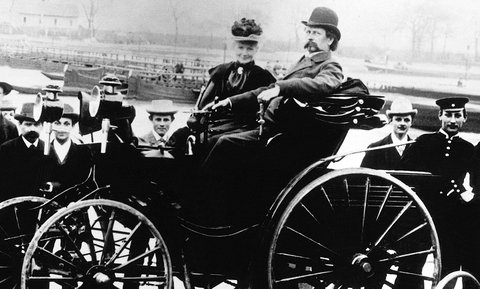
Bertha Benz was far more than just the wife of Karl Benz, inventor of the first true automobile. “It was a partnership, not just a marriage,” said Brandee Sanders, vice president of marketing at Modal Automotive E-commerce, who helped compile this list. Benz is best known for taking the original Patentwagen for a 66-mile family drive. But, along the way, she also made a number of repairs and revisions helping the open-air vehicle run better, such as covering the wood brakes with leather pads. She also helped fund Karl Benz’s manufacturing venture and generate publicity. Bertha Benz was belatedly inducted into the Automotive Hall of Fame in 2016.
Alice Ramsey lays claim to a number of firsts. She became the first woman to drive coast-to-coast, as well as the first woman to be inaugurated into the Automotive Hall of Fame in 2000. Ramsey’s husband bought her a Maxwell in 1908, a rare enough event back then that it caught the eye of the company’s sales manager. The company paid the way for Ramsey and three women friends to drive 3,600 miles across America, no easy feat back then, with barely 150 miles of the journey on pavement. They left on June 9, 1909 and didn’t arrive until 59 days later. Ramsey eventually repeated the trip another 30 times.
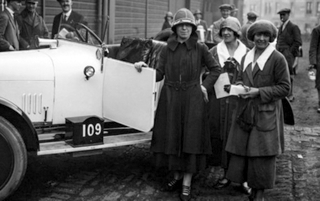
Dorothee Pullinger had gas running in her veins, as many automotive engineers like to say. Born in 1894, she was the daughter of early auto designer Thomas Pullinger but found her own niche as an engineer. Like so many early women in the business, she repeatedly ran into roadblocks. In 1914, she was refused admission to what was then called the Institution of Automotive Engineers. She eventually won over the men running IAE and became the society’s first woman member. Pullinger later ran the short-lived Galloway Car Co., which designed and built vehicles specifically targeting women.
Emily Post is best known as the author of influential guides to etiquette that many still follow today. What is less well known is her role as pioneer automotive promoter. Post was an auto journalist, in 1916 writing a book about her trip across country, “By Motor to the Golden Gates.” But she also “popularized the idea of a woman being able to be behind the wheel by herself,” said Sanders. In classic fashion, Post laid out the proper etiquette for women motorists in her “Blue Book.”
The Inventors
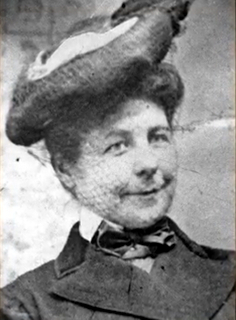
Mary Anderson started out as a rancher and real estate developer, but she was also an early fan of the automobile. And, like many drivers of her era, Anderson got tired of having to cope with the elements, especially when it began to rain. On Nov. 10, 1903, Anderson received a groundbreaking U.S. patent for the first “automotive car window cleaning device controlled from inside the car.” Today, we refer to her invention as the windshield wiper.
Charlotte Bridgewood and Florence Lawrence were, initially, mother and daughter vaudeville performers, Florence later becoming one of the first stars in the silent film era. But the two also liked to travel by automobile and, almost as a sideline, came up with some significant developments. Mother Charlotte developed what has been described as the first windshield washer cleaner in 1918, while daughter Flo developed primitive vehicle stop and turn signals which “helped shape traffic safety,” said Sanders.
Hedy Lamarr is someone more often linked to the movie business as one of the brightest stars of the Golden Age of film and one of the greatest beauties in Hollywood history. Yet Lamarr also was a genius inventor with an assortment of developments that continue to have significant impact. Among those was the concept of “frequency hopping,” a technology original meant to improve Navy torpedoes. It provided the underlying theory behind today’s cellphone technology, including the 5G systems that soon will make autonomous vehicles possible. Lamarr also drew up plans for improved stoplights.
Margaret Wilcox is someone you might want to give thanks to next time you head out for a drive on a cold morning. Born in Chicago in 1838, she became a mechanical engineer when few women had the interest or opportunity to do so. Facing a cold winter herself, Wilcox came up with a way of passing air through the engine, leading to a patent granted on Nov. 23, 1893 for “certain new and useful Improvements in Car-Heaters.” Wilcox also received patents for bake pans, clothes washers and a dishwasher.
Designing Women
Helene Rother was a designer’s designer. Born in Germany, she first went to Paris to work on hat pins and later worked on furniture, jewelry, stained glass windows and even comic books, working for a while at Marvel Comics. But she was also the first woman to join the interior styling staff at General Motors. Rother was running one step ahead of the Nazis when she fled Europe in 1941, eventually winding up in Detroit where GM hired her. Eventually, she left to form her own studio. Rother became just the sixth woman to be inducted into the Automotive Hall of Fame in 2020.
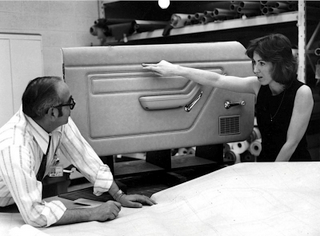
Mimi Vandermoelen wasn’t the very first woman designer at Ford when she hired in 41 years ago. But there hadn’t been another since 1948, and the timing of Vandermoelen’s arrival proved critical. The second-largest Detroit automaker was struggling and, by the mid-1980s was in desperate shape, its future largely dependent upon a midsize sedan called the Taurus. The 1986 model won kudos for its sleek, aerodynamic body but, to many, the real breakthroughs were found inside where she helped craft its distinctly ergonomic cabin. Vandermoelen later became the first woman overseeing all North American exterior and interior design for Ford.
Suzanne Vanderbilt was part of a team formed by Harley Earl, GM’s legendary design chief, in 1955. Collectively, they were known as the “Damsels of Design,” a name she hated, but one that brought lots of attention to both GM and to the capabilities of women stylists. They largely focused their efforts on the stunning concept vehicles that earned GM a big reputation through its traveling “Motorama” events, but some of their projects, including illuminated mirrors and retractable seatbelts, made it into production. Vanderbilt lasted longest among the “Damsels,” remaining with GM for 23 more years.
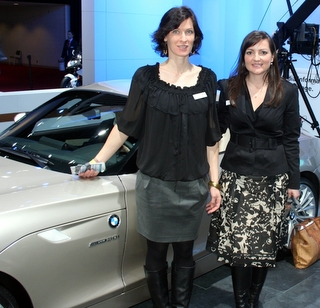
Juliane Blasi and Nadya Arnaout both knew they wanted to become automotive designers while still in high school. While they arrived in the industry at a time when the doors were starting to open to women, most were still being relegated to concept cars and interiors, rather than exterior work on prime programs with high visibility and impact. Blasi and Arnaout scored a breakout when they were assigned to craft BMW’s first hardtop convertible, the Z4. “I can work well with women,” said Blasi, “and I would like to do it more often.” For her part, Arnaout left BMW to work at Tesla.
Behind the Wheel and Wielding the Pen
Shirley Muldowney faced plenty of skeptics during her long career–and proved she could take on the best as one of the most formidable figures in drag racing. The Michigan native became the first woman licensed to drive a top fuel dragster back in 1973 and went on to win three National Hot Rod Association World Championships, among many other awards. “NHRA fought me every inch of the way, but when they saw how a girl could fill the stands; they saw I was good for the sport.” Muldowney said when she was inducted into the Automotive Hall of Fame (AHF) in 2005.

Denise McCluggage was inducted into the AHF in 2001, just one of the many honors for the Kansas native who broke barriers throughout her 88 years. She became an influential journalist, her work appearing in countless publications, including TheDetroitBureau.com. Many experts also credit McCluggage as helping popularize skiing in the U.S. after World War II. She was an outstanding driver, the first woman to claim victory at Sebring–but being banned from the 24 Hours of Le Mans despite four invitations–the men dominating racing at the time fearing she would become the first woman winner there as well.
Janet Guthrie became the first woman to qualify for and then compete in two of the most important motorsport events in the world, the Indianapolis 500 and the Daytona 500. While she didn’t win either, Guthrie helped encourage generations of women who became interested in the auto industry and motorsports. Guthrie began her career as an engineer, getting behind the wheel of a race car in 1963 after being rejected in a bid to become an astronaut. Recognizing her role, Guthrie’s helmet and race suit are now in the Smithsonian Institution. She was inducted into the AHF in 2019.
Jean Jennings has been one of the most influential automotive journalists and a mentor to many of the women now entering the traditionally male-dominated beat. She was a 14-year-old exchange student in Ecuador when she learned how to drive in the Andes. She became a taxi driver in college and later started or supported an assortment of classic car events. The daughter of a legendary automotive journalist, Jennings became editor at a number of publications and co-founded Automobile magazine. She continues to write, judge car shows and remains an influential figure in the media and car business.
In Charge
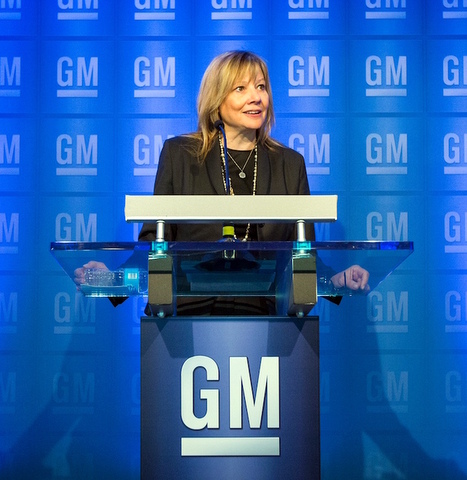
Mary Barra became the first woman to run a major automaker when introduced at chief executive officer in January 2014. Initially CEO, she later adding the title of General Motors chairman. Barra grew up in an automotive family and began working as a “shop rat,” an entry-level position, in a GM factory. Barra downplays any focus on her gender and would readily be considered a breakout executive due to the course she has charted for the automaker. She’s pulled back from established–albeit money-losing–markets, and implemented the plan to turn GM into an EV-only manufacturer by 2035. Barra also is an active proponent for diversity.
Lisa Drake could prove that Barra’s appointment at GM isn’t a fluke. Last October she became the first woman named chief operating officer for North America at Ford Motor Co. She also serves as vice president overseeing global purchasing. Drake joined Ford in 1994 as a college graduate with a degree in powertrain engineering. She is the second highest-ranking woman in the global auto industry and holds the highest rank a woman has ever achieved at Ford.
Story by Paul A. Eisenstein
Reprinted with permission from The Detroit Bureau
